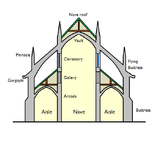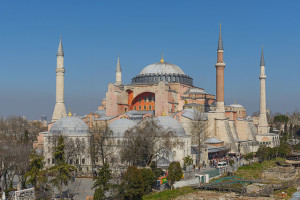Within the Hagia Sophia there was a large collection of holy relics, displayed all around and a 49 ft. silver iconostasis. An Iconostasis is a wall of icons and religious paintings, separating the nave, which is the main body of the church, from the sanctuary. Relics usually consist of physical remains or the personal effects of a saint or venerated person, preserved for purposes of veneration as a tangible memorial. Relics are also an important feature in many different forms of religion such as Buddhism, Christianity, Hinduism and Shamanism. In Catholic theology sacred relics were not to be worshiped, as they believed that only god should be worshiped and adored. At the beginning there were no processes to authenticate the relics that were being used as displays. Due to this, forgeries began to circulate and a lot of collectors were swindled into buying fake holy relics. The existence of counterfeit relics forced the Church to begin regulating their use and authenticity. Relics are now required to be sealed in a reliquary, and accompanied by a certificate of authentication signed and sealed by someone in the Congregation of Saints or by the local Bishop where the saint lived. If the holy relic is not properly authenticated then it cannot be used for public veneration.
Some of the more famous holy relics that have been housed in the Hagia Sophia are the Shroud of Mary, Nails from the true cross and the tombstone of Jesus. These relics were removed when the church was ransacked at the time of the fourth crusade.
Nave
Sources:
https://en.wikipedia.org/wiki/Hagia_Sophia
https://en.wikipedia.org/wiki/Relic
Photo Sources:
http://www.livius.org/a/turkey/istanbul/hagia_sophia/istanbul_hagia_sophia_nave_entrance_1.JPG



